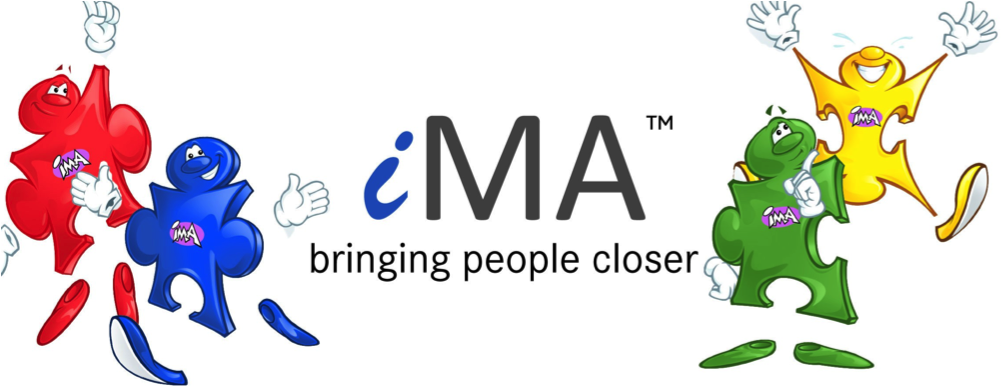Every person is unique—just like their thumbprint. But did you know that most of us fall into one of four main personality types? That’s the idea behind iMA (Identify, Modify, Adapt), a simple yet powerful communication framework designed to improve connection and understanding in both personal and professional settings.
iMA categorises people into four distinct colour-coded personality styles: High Red, High Yellow, High Green, and High Blue. Each colour represents a specific communication style and set of behavioural traits.
This means you likely share key traits with 25% of the population, have some overlap with another 50%, and may naturally clash with the remaining 25%—those who are your behavioural opposite.
We’ve already explored the basics of the iMA framework in a previous article. Now it’s time to take a closer look at what it means to get a High Green result in an iMA colour personality test. Read on to discover the traits, strengths, and communication style of High Greens.
What is a “High Green” Result?
Before we look further into the meaning of a colour personality test green result, it’s first of all important to understand why iMA assigns individuals a “high” colour. The reason for this is extremely straightforward. Everybody is a unique mix of all four types, yet one of them is dominant.
iMA focuses on that dominant colour to map out people’s overall personality type, common traits, strengths, and weaknesses. This information can then be used to gauge how to better understand and communicate with them.
Colour Personality Test Green Result Explained
Finding out the iMA colour of yourself and other people unlocks a unique insight into several important parts of a person’s character and personality. You can also gain an understanding about what makes them tick and how to effectively communicate with them in a way that’s beneficial for all parties.
With this in mind, it’s finally time to delve into the colour personality test result of green:
Main Personality Traits
High Greens are non-assertive, logical, and task-focused. They are driven by their thoughts and feed off as much information as is available at any given time. Extremely methodical, a High Green prefers to work at a slow and considered pace, taking time to make decisions.
Unlike more assertive people, High Greens are left-brain thinking, meaning they’re fully-focused on the here and now and being completely involved in the moment — rather than constantly thinking two steps ahead. They’re comfortable working with detail, creating structures, and working independently.
Strengths and Weaknesses
Just like the other iMA colour types, High Greens bring a wealth of strengths to the table. These can reveal a lot about the kinds of work and activities that suit their personality best.
High Greens are driven by thoughts and detail. They’re excited by technology and possess a unique ability to provide systematic, logical and precise solutions to a whole range of issues. A High Green will thrive when they have been given time and space to think and are able to work independently. The worlds of science; medicine, technology, physics — to give just three examples — would not be fully operational, let alone thrive, without them. Efficient perfectionists, they are methodical, analytical and have exacting standards.
Much like everyone else, however, High Greens do have their limitations. They are unlikely to be able to limit the data required by others, can take too long when perfecting a project (something that might be costly in a competitive marketplace), and be resistant to change. An iMA High Green may also struggle coping with everyone else’s approximations and estimates — something that can lead to frustration for them and irritation for people of the other three colours.
Commonality with Other Colours
Discovering who works well with High Greens is extremely important. You’ll probably not be shocked to learn that the people they get on the best with are fellow High Greens. Their shared characteristics mean they can communicate on the same wavelength (favouring email or other text-based forms of communication), sharing data in minute detail that enables them to ensure everything is absolutely accurate.
High Greens work well with High Reds. Like High Greens, High Reds are left brain thinking, self contained, logical, thoughts driven and task orientated. In addition High Greens work well with High Blues. Both High Greens and High Blues are receptive and non-assertive, preferring to work in the here and now and take time perfecting their work.
The iMA colour that High Greens may clash with are High Yellows. High Greens are not assertive like High Yellows and unlike High Yellows they are left brain logical thinkers, who have an astonishing attention to detail. They revel in this level of detail, whereas High Yellows like to know the bottom line. However the very fact that they have an opposite set of skills can work to both of their benefit, once they know how to work with one another.
How to Identify a High Green
High Greens are self-contained, task-driven and thoughts-led individuals that do not prioritise relationships. A percentage of people who are High Green are non eye-contact or limited with their eye-contact. They are less comfortable engaging in small talk and essentially having a conversation about nothing.
High Greens are very specific, enjoying hard facts and hard data. They require information and evidence instead of just taking someone’s word for it. Unlike more assertive colours, High Greens will only feel comfortable giving an opinion when they feel they’re in a safe environment to do so.
Someone who is High Green is methodical, focused on detail and demands accuracy. They will follow the rules and are excellent at solving technical problems. Extremely well-organised, they like to take their time making decisions, basing them on copious research from a number of different sources — instead of deciding on the fly.
Unlock the True Potential of iMA Colours
Now that you’ve got a firm grasp of what a colour personality test result of green means, it’s time to put that knowledge into action. The starting point for this is the iMA personality questionnaire, which you can take to understand your own characteristics and start to identify the traits of others.
With that stage completed, you can then move on to discovering how the power of iMA can be harnessed across all levels of business activity, from recruitment and mediation to education, and hospitality. It’s also possible to use the practice to ensure you have the right people in the right job roles, thereby creating a nurturing environment in which everyone can thrive.
To find out more about the true potential of iMA, get in touch with me today.




